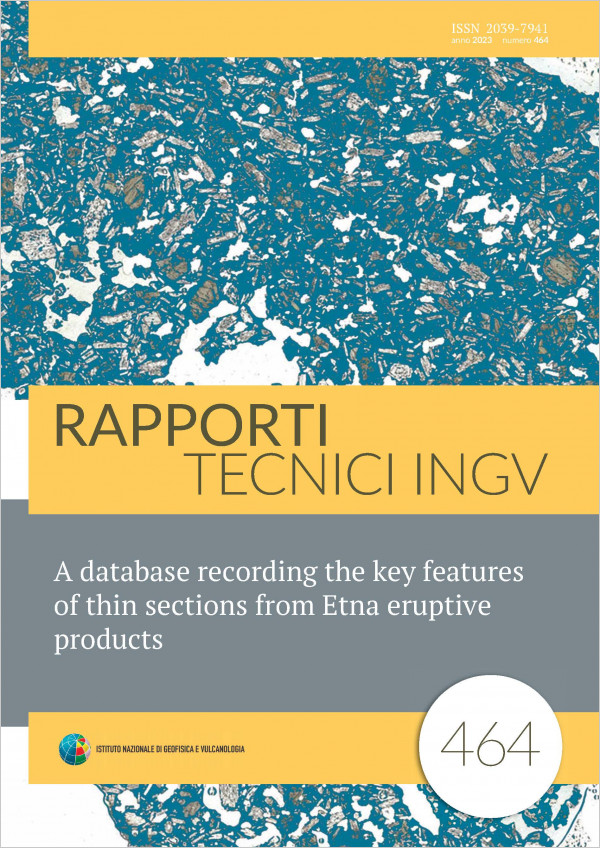A database recording the key features of thin sections from Etna eruptive products
Main Article Content
Abstract
The Istituto Nazionale di Geofisica e Vulcanologia Osservatorio Etneo (INGV OE) hosts a collection of thin sections – thin slices of rock made for petrographic observation and chemical characterization under the microscope. Thin sections are from eruptive products of Etna, collected over the last 30 years for monitoring purposes. This collection is a resource that can be utilized by the INGV staff to support volcano monitoring as well as by researchers for investigating petrological processes and contributing to the understanding of the genesis of recent Etna magmas.
To facilitate and encourage these activities we created a database, in the form of a Microsoft Excel™ spreadsheet with defined fields, designed to describe the key petrographic properties of samples cut into thin sections, in a consistent way. The freely available database, which includes linked images of the thin sections, allows researchers interested in studying Etna volcanism to gain an overview of the main petrographic features of the rocks, which can help them to select the most appropriate samples for their research project(s). The information included in the database can also be utilized for monitoring purposes via comparison with samples from ongoing eruptive events. The database currently contains the description of 33 thin sections from the 20072008 eruptions of Etna, with the remaining thin sections in the INGV OE collection to be added in future. This work has been designed to be incorporated, in the future, into the TSDSystem (Time Series Database), a resource developed over many years by the INGV OE Information Technology (IT) staff, the purpose of which is to archive, update and distribute data from INGV OE monitoring activities. It is hoped that this resource, once available for the scientific community, will both inspire and facilitate research projects involving Etna eruption products, making full use of this extensive but otherwise scarcely studied sample collection, with the ultimate aim of improving understanding of volcanic activity at Etna.
To facilitate and encourage these activities we created a database, in the form of a Microsoft Excel™ spreadsheet with defined fields, designed to describe the key petrographic properties of samples cut into thin sections, in a consistent way. The freely available database, which includes linked images of the thin sections, allows researchers interested in studying Etna volcanism to gain an overview of the main petrographic features of the rocks, which can help them to select the most appropriate samples for their research project(s). The information included in the database can also be utilized for monitoring purposes via comparison with samples from ongoing eruptive events. The database currently contains the description of 33 thin sections from the 20072008 eruptions of Etna, with the remaining thin sections in the INGV OE collection to be added in future. This work has been designed to be incorporated, in the future, into the TSDSystem (Time Series Database), a resource developed over many years by the INGV OE Information Technology (IT) staff, the purpose of which is to archive, update and distribute data from INGV OE monitoring activities. It is hoped that this resource, once available for the scientific community, will both inspire and facilitate research projects involving Etna eruption products, making full use of this extensive but otherwise scarcely studied sample collection, with the ultimate aim of improving understanding of volcanic activity at Etna.
Article Details
Issue
Section
Article

This work is licensed under a Creative Commons Attribution 4.0 International License.

